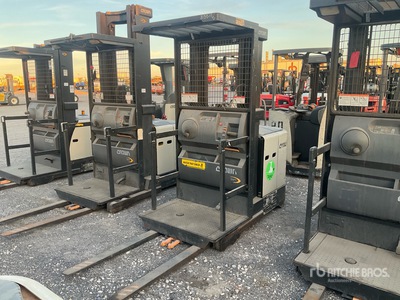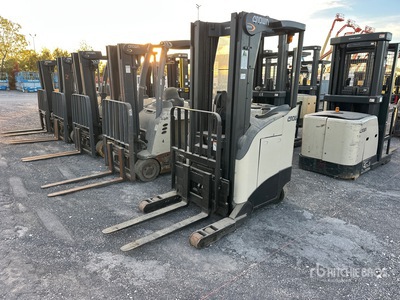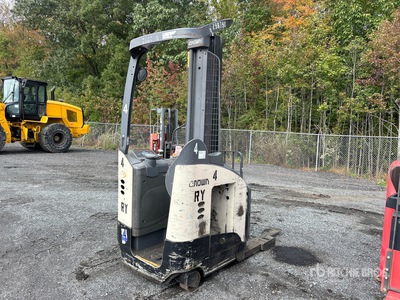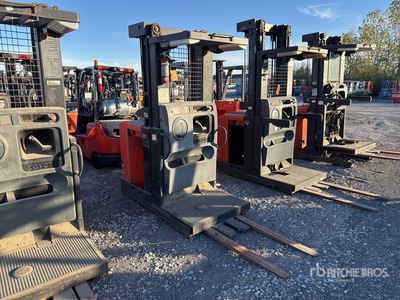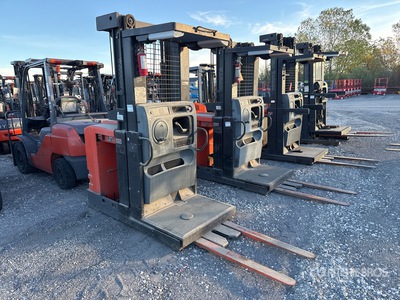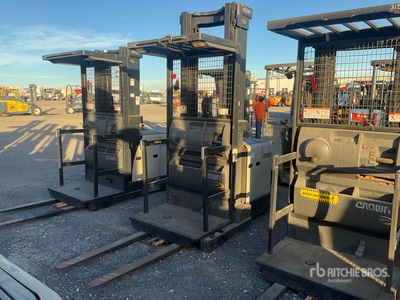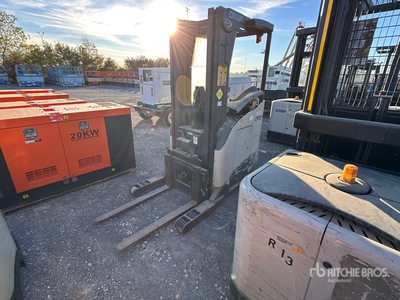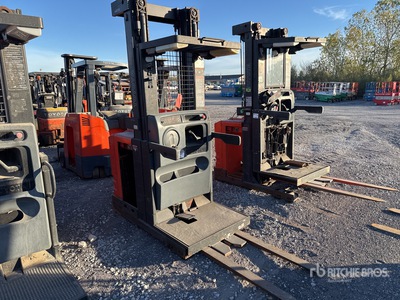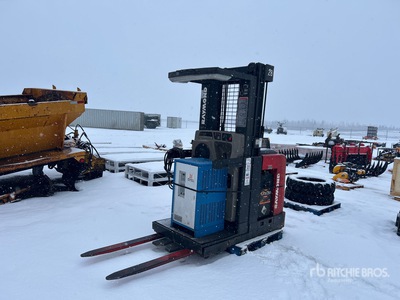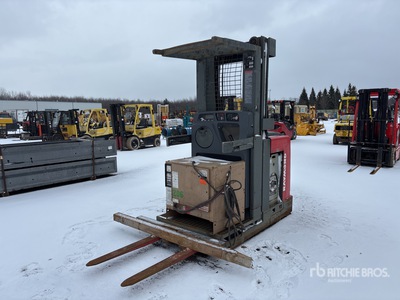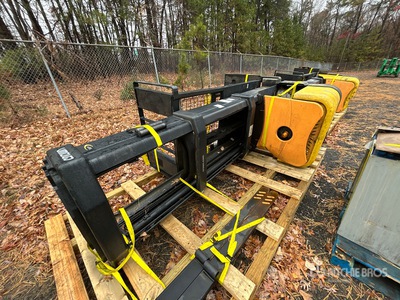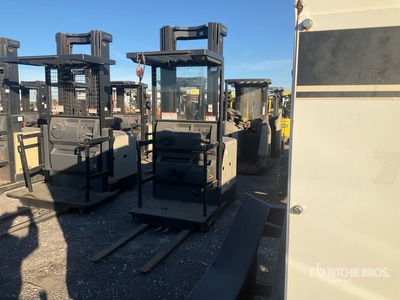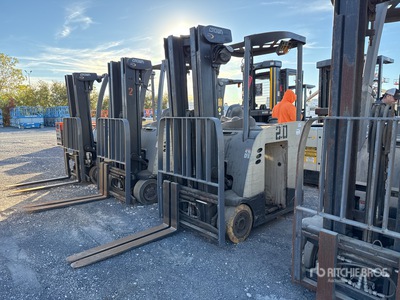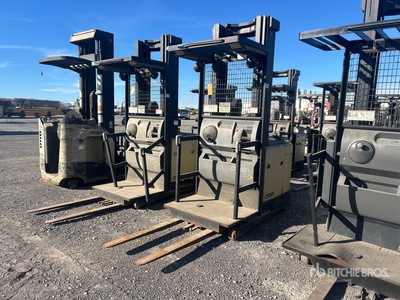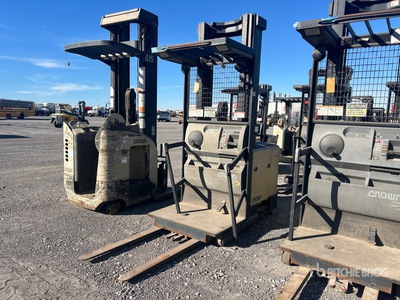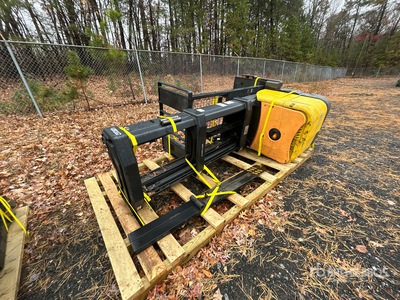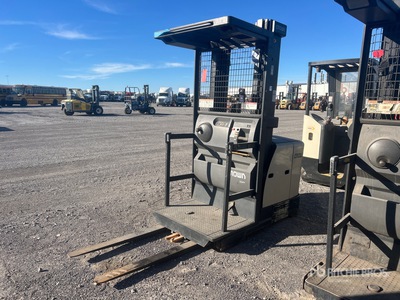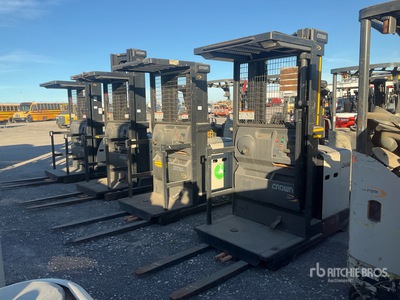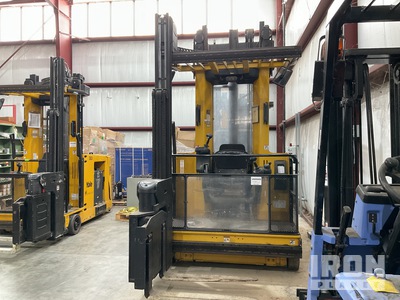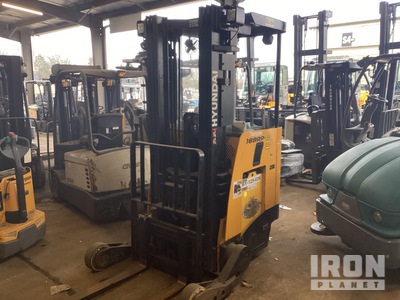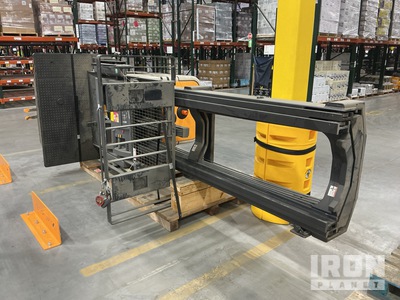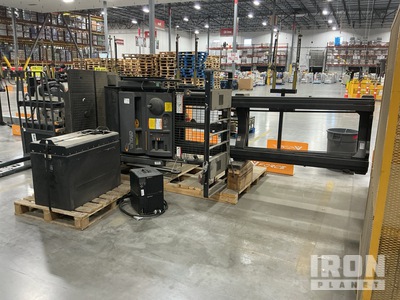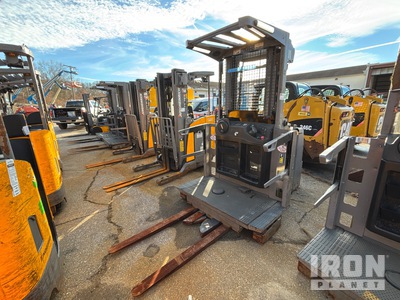Filters
Showing 0-42 of 42 results
How order pickers work and where they’re used
Order pickers feature a powered platform that lifts the operator and forks simultaneously, allowing access to goods stored at various heights. Most models are electric, operating quietly with zero emissions, and are guided by wire, rail, or camera systems to maintain stability in narrow aisles. The operator controls travel, lift, and steering through a tiller or joystick from a standing platform equipped with safety rails and harness points.
Common applications and industries
- E-commerce and retail distribution: High-frequency, low-quantity picking for fast-moving inventory.
- Third-party logistics: Versatile use across varied SKU profiles and customer-specific racking systems.
- Cold storage and food handling: Stable operation in low-temperature environments with proper battery management.
- Automotive and parts warehouses: Retrieval of small to medium components from multi-tier racking.
- General warehousing: Efficient order fulfillment, restocking, and cross-docking tasks.
Order picker vs reach truck vs stacker
Order pickers, reach trucks, and electric stackers each serve unique purposes in warehouse operations. Understanding their differences ensures you choose the most efficient tool for your workflow:
- Order picker: Designed for “man-up” operation where the worker is lifted with the load to hand-pick individual cases or products.
- Reach truck: Keeps the operator at ground level and extends the mast forward to retrieve entire pallets from high racking.
- Electric stacker: Handles ground-level pallet transport and low to mid-level stacking; better for compact spaces and lighter loads.
Order pickers excel in high-turnover warehouses with narrow aisles and multi-level shelving, where efficiency in picking individual SKUs is critical. They prioritize speed, operator safety, and precision rather than heavy lift capacity.
Choosing the right order picker
Selecting an order picker depends on rack height, aisle configuration, and daily throughput. Key factors to consider include:
- Platform height: Low-level models reach the first few rack levels, while high-level units can extend over 30 feet for multi-tier systems.
- Aisle guidance: Wire or rail guidance keeps trucks centered and stable during elevated operation.
- Battery type: Lead-acid batteries offer proven reliability; lithium-ion versions charge faster and require less maintenance.
- Load capacity: Most models handle between 1,000 and 3,000 pounds—suitable for case or part picking rather than full pallets.
- Ergonomics and safety: Look for stable platforms, harness attachment points, intuitive controls, and optional operator sensors for fall prevention.
- Drive and lift systems: AC drive motors and regenerative braking improve energy efficiency and control.
Facilities that rely heavily on SKU-level picking should also consider integrating telematics or fleet management software to track utilization and battery health for consistent uptime.
Why buying used order pickers is a smart choice
Used order pickers deliver significant savings compared to new equipment without compromising reliability. Since electric motors and lift systems are built for long service lives, many used units retain excellent performance when properly maintained. Buyers at Ritchie Bros. can find models from trusted brands like Crown, Raymond, Toyota, Hyster, and Yale—each offering parts support and consistent aftermarket availability.
When evaluating a used order picker, inspect the lift mast, guidance sensors, steering mechanisms, and battery condition. Review operator platform safety systems and confirm that harness anchors, rails, and controls function properly. Transparent inspection reports and detailed listings make it easy to assess condition before purchase, ensuring confidence in every bid.
Explore order pickers at Ritchie Bros.
Ritchie Bros. provides one of the most comprehensive selections of used order pickers for sale. Whether

